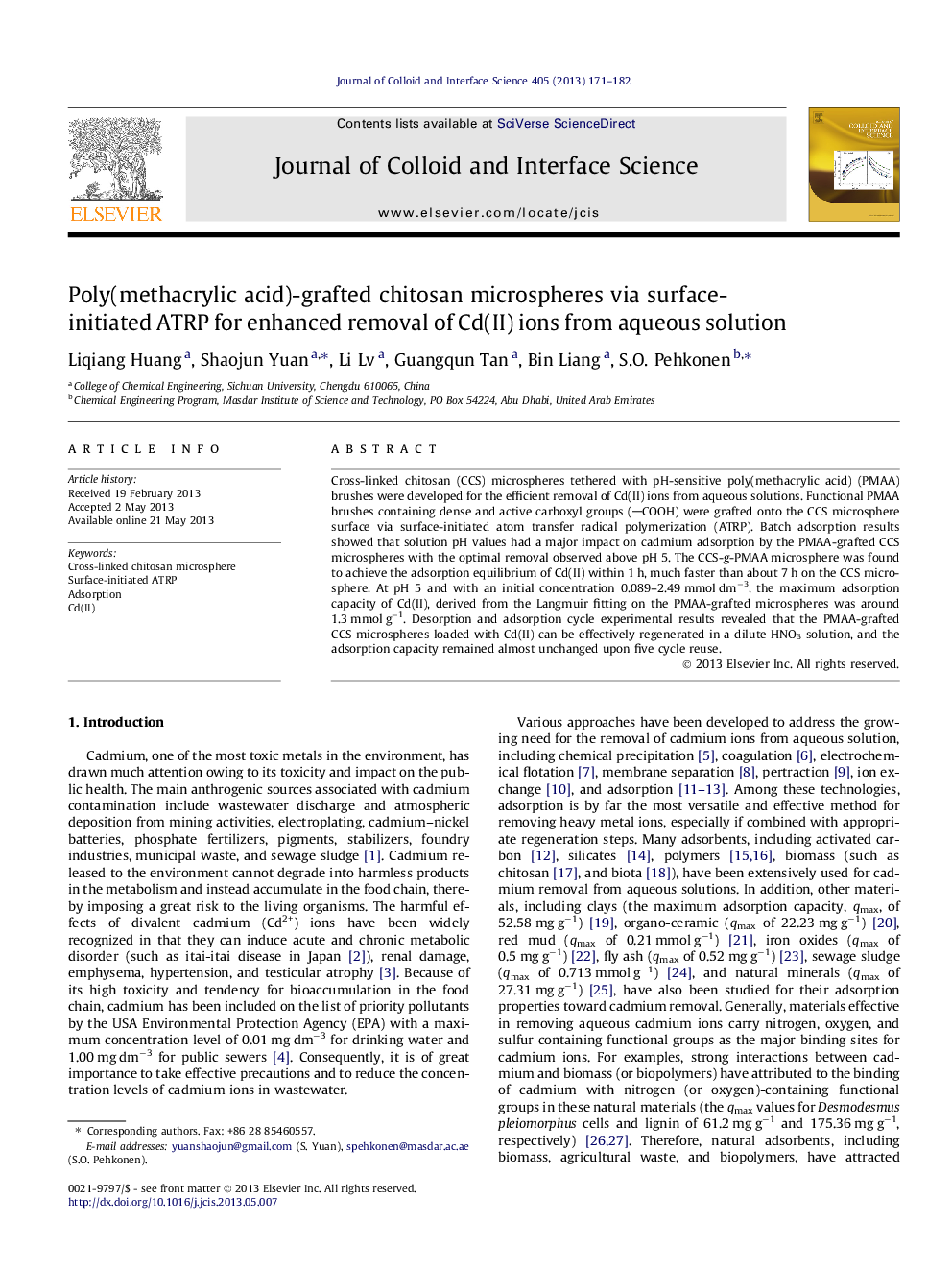| Article ID | Journal | Published Year | Pages | File Type |
|---|---|---|---|---|
| 607649 | Journal of Colloid and Interface Science | 2013 | 12 Pages |
•Poly(methacrylic acid)-grafted chitosan microsphere was synthesized via ATRP.•The kinetic data gave a good fit to the pseudo-second-order rate model.•The adsorption isotherms were well described by the Langmuir model.•The synthesized microspheres were readily regenerated by dilute nitric acid.•The adsorption mechanism was proposed through XPS analyses.
Cross-linked chitosan (CCS) microspheres tethered with pH-sensitive poly(methacrylic acid) (PMAA) brushes were developed for the efficient removal of Cd(II) ions from aqueous solutions. Functional PMAA brushes containing dense and active carboxyl groups (COOH) were grafted onto the CCS microsphere surface via surface-initiated atom transfer radical polymerization (ATRP). Batch adsorption results showed that solution pH values had a major impact on cadmium adsorption by the PMAA-grafted CCS microspheres with the optimal removal observed above pH 5. The CCS-g-PMAA microsphere was found to achieve the adsorption equilibrium of Cd(II) within 1 h, much faster than about 7 h on the CCS microsphere. At pH 5 and with an initial concentration 0.089–2.49 mmol dm−3, the maximum adsorption capacity of Cd(II), derived from the Langmuir fitting on the PMAA-grafted microspheres was around 1.3 mmol g−1. Desorption and adsorption cycle experimental results revealed that the PMAA-grafted CCS microspheres loaded with Cd(II) can be effectively regenerated in a dilute HNO3 solution, and the adsorption capacity remained almost unchanged upon five cycle reuse.
Graphic abstractFigure optionsDownload full-size imageDownload high-quality image (51 K)Download as PowerPoint slide
